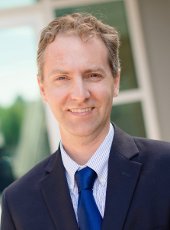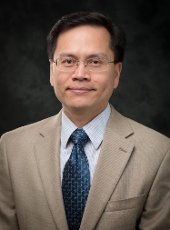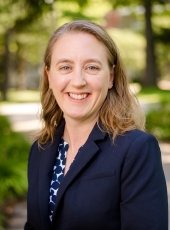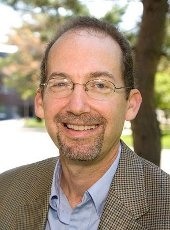|April 7, 2021|Theme: Simulation of Materials|

Lecturer
Richard and Elizabeth Henes Professor Gregory Odegard, Computational Mechanics, Mechanical Engineering-Engineering Mechanics
Topic
US-COMP: Next Generation of Composite Materials for Crewed Deep Space Missions |Recording of Odegard Lecture | Passcode: O^7HG+@S
Research Statement
Current state-of-the-art composite materials are not light/strong enough for crewed missions to Mars and beyond. Structural components of deep space vehicles require lighter/stronger materials for fuel efficiency. The NASA Space Technologies Research Institute (STRI) for Ultra-Strong Composites by Computational Design (US-COMP) is focused on developing a new generation of composites for this purpose. US-COMP is using computational simulation to drive the material design in an efficient manner. By developing new simulation tools, experimental methods, and databases of material information, US-COMP is playing a central role in the national Materials Genome Initiative (MGI). The ultimate goals of US- COMP are to design, fabricate, and test composite panels that meet NASA’s requirements; and to train students to enter the advanced composite materials workforce.
|February 25, 2021|Theme: Nanoscale Materials|

Lecturer
University Professor Yoke Khin Yap, Director of Applied Physics Graduate Program
Topic
Positive Use of Negative Properties at the Nanoscale | Recording of Yap Lecture | Passcode: 3we*mv!Y
Research Statement
The nanoscale is a measure of extremely small substances. For example, a nanometer (unit: nm) is one-billionth of a meter, equivalent to the length of a linear array of ten hydrogen atoms, the smallest atom on earth. My research group started with the synthesis and characterization of nanoscale materials, and has established a global leadership on boron nitride nanotubes (BNNTs). In this talk, I will demonstrate the use of undesirable properties of BNNTs for novel electronic and biomedical applications at the atomic and molecular scales. The lesson learned to me is to think positively about the negative aspects of things. This may lead to unexpected discoveries that most people missed.
|December 9, 2020|Theme: Virus Research|

Lecturer
University Professor Caryn Heldt, Director of the Health Research Institute
Topic
Turning Viruses into Therapies | Recording of Heldt Lecture Passcode: ?Z#&j=5g
Research Statement
Viruses are well known for the havoc they create and how easy they can spread from one person to another. However, we have also learned to use them to protect ourselves from disease. Vaccination has saved millions of lives and has evolved from using other animal versions of viruses to stop smallpox to the genetically engineered vaccines administered today. A new use of viruses is as gene delivery vehicles. The virus can delivers faulty genes to cure single mutation diseases, and this is also the basis for many Phase III coronavirus vaccines. But the major challenge for vaccination and gene delivery is that demand is often larger than our manufacturing capabilities. Our lab is tackling some of these challenges to improve access to life saving therapies.
|October 14, 2020| Theme: Direct Measurements|

Lecturer
University Professor Timothy Schultz, Electrical And Computer Engineering.
Topic
Direct Measurement of Coherent Fields | Recording of Schultz lecture Passcode: v&c8YdKD
Research Statement
In 1948, Dennis Gabor introduced a remote-sensing method he called holography, based on the Greek words holos—meaning “whole”—and graphe—meaning “writing”. As the name implies, holography is a method for recording both the amplitude and phase of an electromagnetic field, not just the physically-observable intensity. Like Gabor’s original invention, most subsequent techniques for recording the entire field—rather than only its intensity—utilize a reference field. Phase retrieval refers to an alternative class of methods that record the entire field from the intensities of linear transforms of the field, without the need for an external reference. Whereas conventional methods of phase-retrieval have had limited success, new computational methods based on multi-path interferometry and coded sensing have the potential to revolutionize the way we make direct measurements of coherent fields.